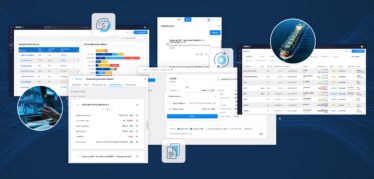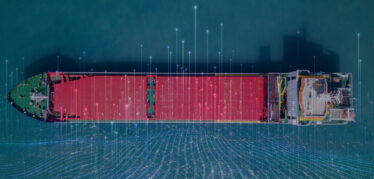Data is the lifeblood of the modern enterprise. But the vast majority of data that exists goes unused.
In fact, it is estimated that more than half of the data generated by companies is unutilized or, in many cases, unrecognized altogether. This ‘data in the rough’ has significant potential to benefit the organization, but goes untapped due to it being either semi-structured or entirely unstructured, locked in siloes such as Microsoft applications, emails, instant messages, audio, video, etc.
Unstructured data is especially problematic in the maritime space, with complex workflows, multiple systems, and diverse stakeholders that contribute to a myriad of data disparities. The sheer volume of data in the maritime space further complicates things. It is estimated that the industry generates more than 100 million data points every day.
Let’s take a closer look at three negative business impacts that stem from unstructured data, and how the right commercial solution can surface this ‘data in the rough’ to position your maritime shipping organization for data-driven success.
1.) Analysis paralysis
Collecting and storing data from various systems and stakeholders within the maritime shipping ecosystem can result in a database that is unorganized, unstandardized, and virtually unusable for any meaningful kind of analysis. For data to be used, it must first be cleaned and standardized. Depending on the amount of data on hand, this standardization process can be a time-consuming and costly endeavor. In the meantime, decision-makers throughout the maritime workflow are forced to operate independently of data, manually piece together information, or delay critical initiatives.
Consider an example. When a maritime shipping organization charters a voyage, it must account for a variety of considerations, including the cargo to be moved, the availability and cost of freight in the market, vessel performance, weather patterns, sanctions lists, and more. With multiple options available, the complex vetting and nominations process requires careful scenario testing to assess the available alternatives and their downstream impacts. Without unified data, the speed and quality of this workflow are compromised. Furthermore, it can paralyze or delay decision making, resulting in missed opportunities for the business.
2.) Quantifiable loss
In addition to slowing analyses and decision making, disparate data can result in a financial loss for companies. This issue is not germane to maritime shipping. One recent Gartner survey found that poor data quality could be responsible for an average of $15 million per year in losses. For commercial maritime shipping organizations, disparate data can be even more costly than that.
Consider a second example. The value of freight and fuel contracts is inherently volatile and subject to market fluctuations. As a result, the performance of the market at large can impact voyage profitability significantly. In many maritime shipping organizations, traders and risk managers are tasked with keeping their thumbs on the pulse of the market and hedging physical freight and fuel contracts with paper trades. Without unified data, this process is relegated to time-consuming data retrieval processes, complex macros, and best-guess assumptions. Conversely, standardized data can instantly combine external and internal variables to provide an accurate assessment of market exposure at all times. This enables traders and risk managers to align their contracts in a proactive and highly efficient way.
3.) Lack of continuity
A business’ data landscape is only as strong as its weakest integration link. Disparate data that results from poor or incomplete integration substantially hinders cross-functional continuity, resulting in duplicate or conflicting efforts, time-consuming manual data entry, and siloed stakeholders. In an industry that runs on precise timetables, this is detrimental to the business’ short-term and long-term success.
Consider a final example. Before a voyage commences, maritime shipping organizations make ETA and laytime projections based on available information. Variables include vessel speed, cargo type and volume, voyage distance and route, weather conditions, and more. But, as any maritime shipping professional knows, things can change while at sea. Weather conditions and unforeseen obstacles can lengthen voyage duration and delay ETA. Additionally, back-ups at the port and berth can result in outsized laytime and costly demurrage claims. The key to avoiding negative downstream impacts is maintaining full continuity and visibility from the vessel at sea to the operators on the shore and the officials on the port. This empowers all stakeholders to align expectations and make the necessary operational adjustments.
Eliminate Disparate Data with the Veson IMOS Platform (VIP)
By establishing one, integrated workflow from pre-fixture chartering to voyage operations and post-voyage accounting, the Veson IMOS Platform (VIP) ensures that every part of the maritime shipping organization has access to timely, complete, accurate, and, most importantly, structured data. Beyond your maritime shipping workflow, VIP also supports enterprise and industry-continuity by integrating with internal systems, connecting with industry data sources, and helping to standardize cross-stakeholder communications.
Data standardization is the maritime industry’s next leap, and we at Veson are dedicated to helping our clients overcome standardization-related obstacles to unlock greater efficiency, connectivity, and profitability.



 Josh Luby
Josh Luby
 Ayodele Fashakin
Ayodele Fashakin
 Ben Thurecht
Ben Thurecht